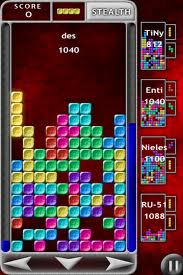Video Game Copyright
Recently, the owners of Tetris sued the creators of a similar game, Mino, for copyright infringement. In a fairly simple game like Tetris, which elements can be protected under copyright law?
In Tetris Holding, LLC v. XIO Interactive, Inc., Tetris sued Xio for copyright infringement of its well-known and popular game, Tetris. Xio created the game “Mino,” which was similar to Tetris, with the same concept and general rules. The issue is that, copyright law doesn’t protect the basic idea or underlying rules of a game. To protect those elements, a patent is necessary (which Tetris did not have). With respect to video games, copyright protects the “expression” of those ideas and rules. This may include character art, music, and sound effects. According to Xio, they only copied the game’s functional elements, which are not subject to copyright protection. Yes, Xio admitted that they intended to market and profit from making a Tetris-like game.
A developer’s best chance to make a copyright claim against an infringing game comes through the creative elements of the game, such as character models, dialogue, or major and distinctive story elements. Copyright law often runs up against the Idea-Expression Dichotomy. By law, copyright can only protect the expression of an idea, not the idea itself. As you can imagine, there is a lot of grey area here. When trying to determine whether a game has copyrightable elements, the expressive portions of the video game must be separated from the unprotected elements. After the expressive portions of the video game are identified, they must be compared to the allegedly infringing game to determine whether there is substantial similarity between the expressive portions.
To further complicate things, we must now consider the Merger Doctrine, which holds that if the expression is so inseparable from the underlying idea that there are no or very few other ways of expressing it, the expression is not copyrightable. In addition (I know you were hoping we had run out of Doctrines – no such luck), the Scènes à faire Doctrine prohibits copyright protection for any element that is widely used and commonly associated with a given genre. So, for example, nobody can claim copyright protection over the use of spaceships in an intergalactic battle game, or cows in a game that takes place on a farm.
Yet another approach embraced by some courts is the Total Concept and Feel Doctrine. Here, the court doesn’t dissect a work into “protected” and “unprotected.” Instead, they look at the work as a whole and consider whether the plaintiff is able to show that the copy’s overall concept and feel is substantially similar to the plaintiff’s game. This may seem like a more holistic approach, taking all elements into consideration, but it tends to leave the final result in the eye of the beholder – or, more accurately, at the discretion of the court in question.
Regardless of doctrine being applied at the moment, the basic rule to take from this is that the more complex a video game is and the more those complexities are copied, the better the chance there will be a valid claim of copyright infringement. A more simplistic game makes it difficult to separate those “expressive” elements from the general rules of the game.
In the end, the judge in the Tetris case ruled for Tetris on some elements and Xio on other elements. The judge did find that some elements of the game were impossible to separate and therefore were not copyrightable. However, the parts that the judge found to be “expressive” (and therefore subject to copyright expression) included:
- The dimensions of the playing field [20 squares high by ten squares wide].
- The display of “garbage” lines [the random junk that can optionally appear at the start of a game].
- The appearance of “ghost” or shadow pieces [which highlight where a piece is going to land].
- The display of the next piece to fall.
- The change in color of the pieces when they lock with the accumulated pieces.
- The appearance of squares automatically filling in the game board when the game is over.
The judge found that by copying all of these elements, the defendant had engaged in “wholesale copying,” and that Xio’s only purpose for copying them was to avoid the “difficult take of developing its own take on a known idea.”

